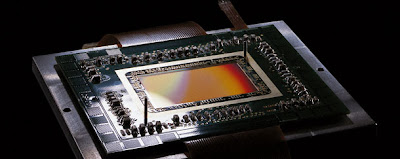
WHAT IS CMOS?
Like other photoelectric sensors, CMOS (Complementary Metal-Oxide Semiconductor) image sensors are based on an array of photo-sensitive diodes. Each pixel contains one diode that converts light into an electrical charge. Unlike CCDs (Charge Coupled Devices), which output the charge from the pixels serially in a “bucket brigade” process, CMOS image sensors provide a voltage signal at each pixel that is directly proportional to the amount of charge the pixel has collected. Each pixel can be individually addressed to access this information, resulting in a much higher level of flexibility with regards to timing or image format.
Like other photoelectric sensors, CMOS (Complementary Metal-Oxide Semiconductor) image sensors are based on an array of photo-sensitive diodes. Each pixel contains one diode that converts light into an electrical charge. Unlike CCDs (Charge Coupled Devices), which output the charge from the pixels serially in a “bucket brigade” process, CMOS image sensors provide a voltage signal at each pixel that is directly proportional to the amount of charge the pixel has collected. Each pixel can be individually addressed to access this information, resulting in a much higher level of flexibility with regards to timing or image format.
WHY CMOS?
Since the D-20 sensor is an ARRI specified design, its performance is custom tailored to digital cinematography and gives ARRI tremendous freedom for future developments. CMOS sensors inherently have superior power efficiency and a natural blooming immunity, plus it is possible to read out any portion of the sensor at any time. This has a wide range of advantages, including the ability to read out high frame rates despite the high pixel count and the ability to run speed ramps. It also means that the recording format can be freely chosen, so it is possible to trade spatial resolution for frame rate.
Since the D-20 sensor is an ARRI specified design, its performance is custom tailored to digital cinematography and gives ARRI tremendous freedom for future developments. CMOS sensors inherently have superior power efficiency and a natural blooming immunity, plus it is possible to read out any portion of the sensor at any time. This has a wide range of advantages, including the ability to read out high frame rates despite the high pixel count and the ability to run speed ramps. It also means that the recording format can be freely chosen, so it is possible to trade spatial resolution for frame rate.
No comments:
Post a Comment